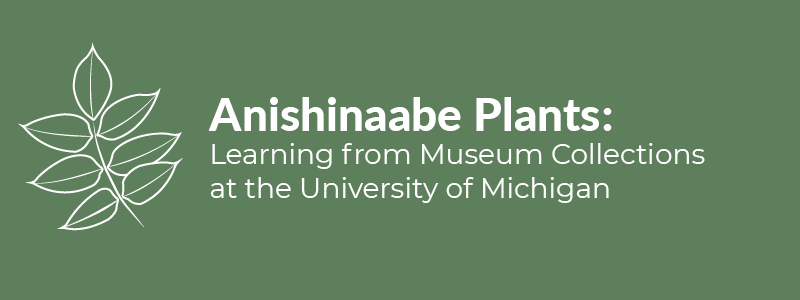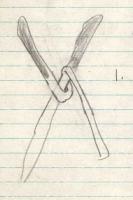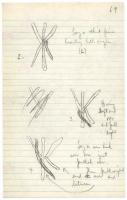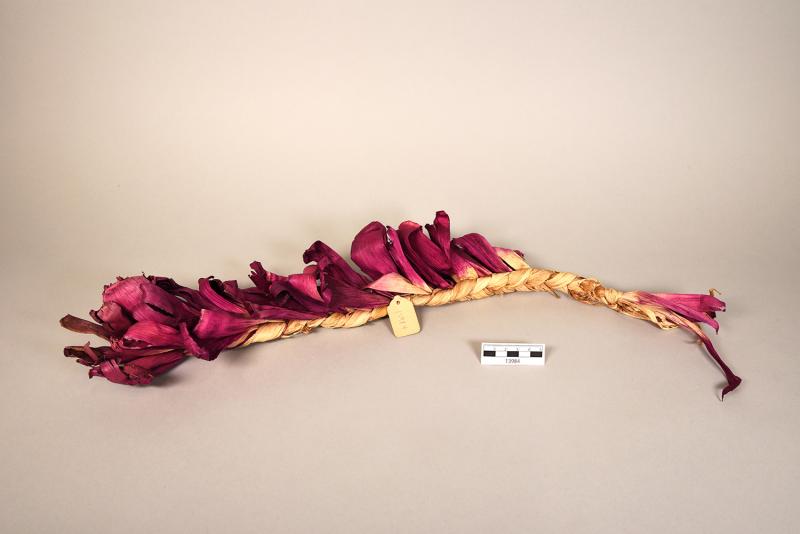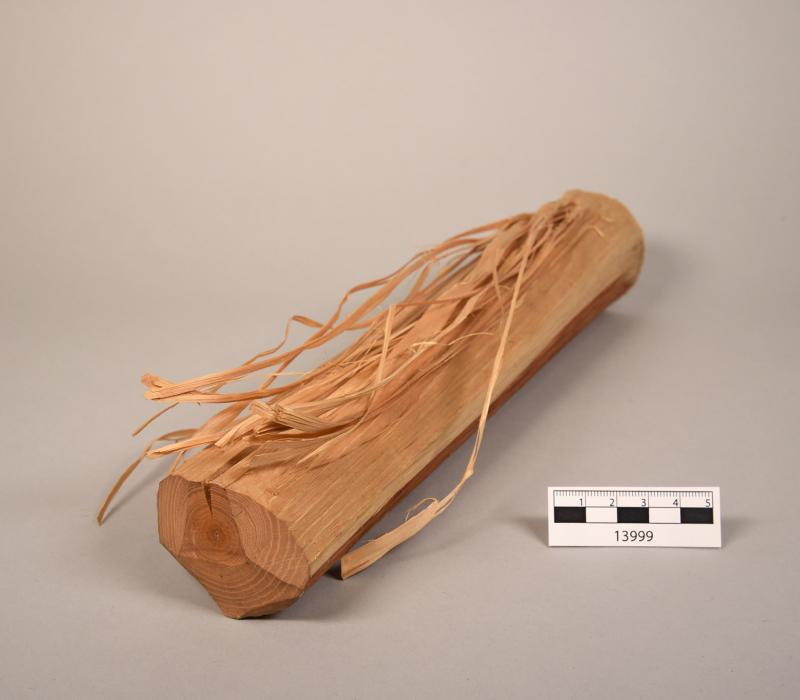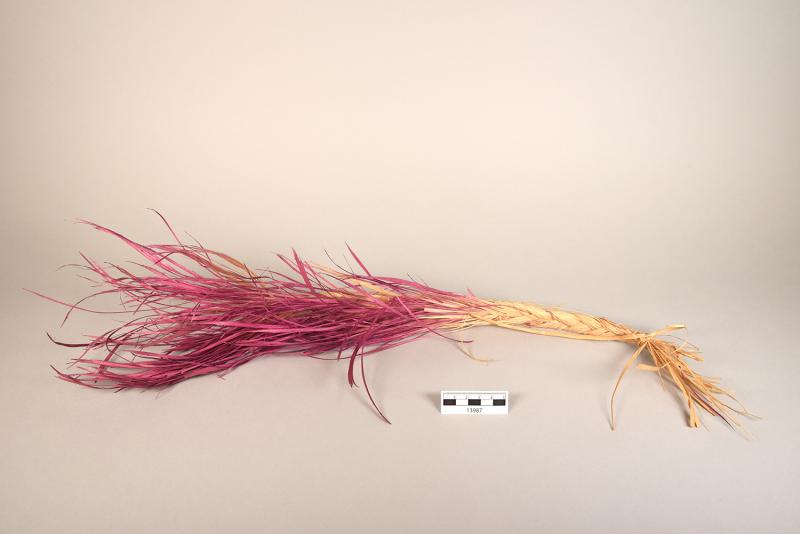Braided Mats
Mrs. George (Sarah) Shogonosh made these two braided mats -- one of corn husks, the other of hickory splints. She entered both mats to a competition at the 1932 Walpole Fair, where they both won first place.
According to Mrs. Shogonosh, the technique that she used to make the mats came from the Ottawa. While Volney Jones did not see Mrs. Shogonosh make these mats, she demonstrated her process to him in 1933.
Before beginning the process of braiding, Mrs. Shogonosh selected strips that were similar in length. For the hickory mat, splints were stripped from a hickory log. The fresh hickory splints were very pliable. For the corn husk mat, she used husks that had been saved from the previous year's corn harvest. The hickory splints and corn husks were dyed with a Turkish commercial dye before braiding.
Making the Braid
Taking two pieces of material, Mrs. Shogonosh looped one strip around the other to form an X, with the ends of both strips kept even. A third strip was placed in the center, bisecting the angles. Next she brought the bottom left end over and pulled tight. She laid a new strip on top of the one just pulled over, and then pulled the bottom right end over and between the bottom strips. A new strip was again added over the one just pulled over and worked as a single strand, and the strand which was outside and on the bottom was pulled over again. This “waterfall braiding” technique left parts of the strands outside of the braid to create the plush pile on the top of the mats.
Creating the Mat
Once these braided loops were made, they were wound around one another and tied together using small pieces of basswood inner bark fiber (see basswood twine page for details). The basswood fiber was woven through the middle of two separate braids and knotted together, using a darning needle.
In addition to the two mats, Jones also collected the partial braids that Mrs. Shogonosh used to demonstrate the process of making the mats.
Items made by Mrs. Shonogosh to demonstrate the process of making the braided mats
An Anishinaabe Weaver's Thoughts on Braided Mats
Wasson (Reneé) Dillard, Anishinaabe fiber artist and weaver, told us that her mother and grandmother made braided mats and that these types of mats were commonly made for sale. Many Anishinaabe weavers used natural fibers from native plants, rather than fabric or yarn, to make their braided mats. As Wasson points out, using these natural fibers provided opportunities to teach and preserve traditional ways of preparing plants. Mrs, Shogonosh made her mats from hickory and corn husks. She stitched the braids together using basswood fibers. She also chose a different braiding technique for her mats that created a long pile on the top side of the mat.
Mitigwaabaak – Hickory
When Wasson Dillard harvests hickory, she gives thanks to mitig (tree) and aki (Earth) for their sacrifice by leaving an offering of semaa (tobacco). She leaves a similar offering by the biggest tree in the area because it is likely the parent or grandparent of the nearby trees. She does not overharvest, only taking what she needs and using it respectfully.
Mandaaminaak – ear of corn
Wasson told us that the dried husks of flint corn, not sweet corn, were used to make braided mats. Mrs. Shogonosh probably used husks from the ears of flint corn that her husband George grew. Some varieties of corn grown by Anishinaabek have husks with streaks of red in them, which weavers used to add color to their mats, rather than dying the husks. Anishinaabek also braid ears of corn together after they are harvested. These braids of corn are hung to store the corn for future use.
